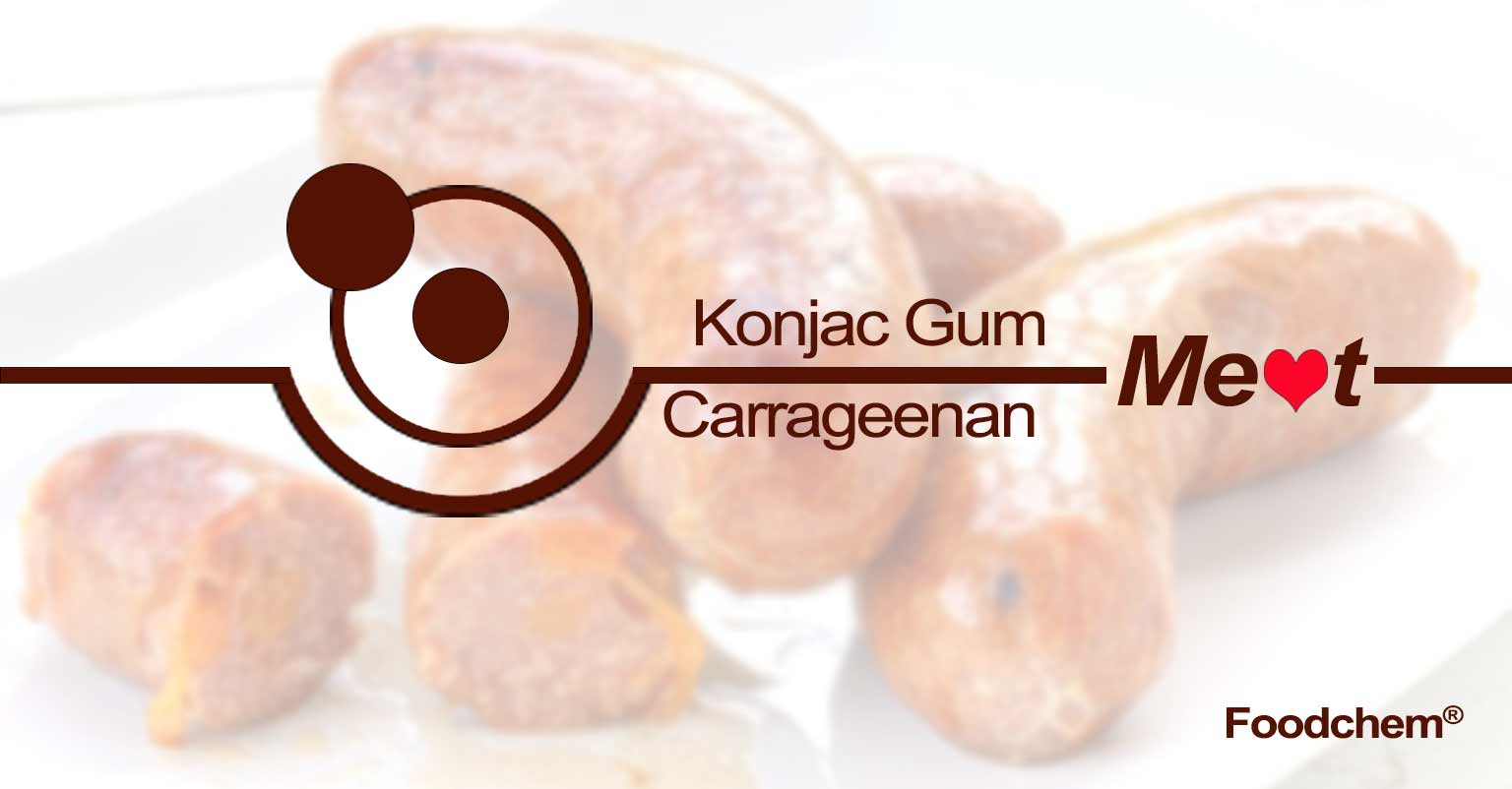FOODCHEM
Pour vous aide
Pour plus d'informations sur les produits et le prix, commencez à chat avec une personne de vente:
Share:

Nouvelle
The main application of konjac gum
Konjac gum is a pure natural high-purity hydrocolloid made from the alpine plant-fresh konjac tubers and processed into konjac fine powder and then refined by alcohol. The main component is glucomannan. The dry basis content is over 80%. The particles are fine and even, with high viscosity, strong stability and no odor. It has better water solubility, gelability, uniform and stable aqueous solution, fast dissolution, and has physical and chemical properties such as expansion coefficient of more than 100 times. It is widely used in health food and other aspects, and is a new product with high technical content.
Konjac gum can be used as a stabilizer, suspending agent, thickener, emulsifier, and quality improver in noodle products, meat products, and canned products. Konjac gum and other edible gums have a complementary effect to produce the best viscoelastic effect. This konjac gum further enhances the gel strength and stabilization of carrageenan, xanthan gum and other gums, and has multiple functions. Is being widely used in the food industry.

Konjac gum is high-purity konjac glucomannan, and its main characteristics are 6 points.
1. Water solubility of konjac gum
Konjac gum is a water-soluble colloid. During the dissolution process, the diffusion and migration speed of water molecules far exceeds the diffusion and migration speed of konjac glucomannan macromolecules. As a result, the konjac gum particles swell and produce a thin surface on the surface of the particles. A layer of viscous glycan solution makes the konjac gum particles stick together and agglomerates, which prevents the konjac gum from further dissolving. For this purpose, dilute dispersants such as sucrose, glucose, salt or starch should be mixed with konjac gum before dissolving it to prevent agglomeration.
2. Film formation of konjac gum
1) Konjac gum has good film-forming properties, and can be made into a film with high transparency and density, and a preservative can be added to the film. Authors such as Zhang Qichang and Shi Yimin successfully applied konjac gum film in the preservation of citrus and Wenzhou tangerine.
2) Konjac gum film can be made into "stacked" film food. If the konjac gum edible film is used as packaging material for packaging food, it will not cause environmental pollution.
3) The film-forming properties of konjac gum can also be used for the production of microcapsule powder essence and powder oil; it can be used for the production of ice shells of ice cream or ice cream; it can be used for the production of konjac spring roll skin.
3. Water retention of konjac gum
Konjac glucomannan macromolecules can be combined with water molecules through hydrogen bonds, molecular dipoles, transient dipoles and other forces to form huge and difficult to move huge molecules, making konjac gum solution into a viscous non-Newtonian fluid in water . In the gel food, it can promote the konjac glucomannan macromolecule to establish a network structure, and its water holding capacity is 30 to 150 times that of the konjac gum itself.
4. The adhesiveness of konjac gum
Even if the konjac gum solution is thinner, it is a non-Newtonian fluid, and the thicker konjac gum solution is more viscous. Adding konjac gum solution to wheat flour can increase the apparent gluten value of wheat flour. Because of the tackiness of konjac gum, macaroni, hollow noodles, long whisk noodles, ramen noodles, ravioli, etc. with konjac gum are not boiled after boiling in boiling water. This is the specific application of konjac gum tackiness. Because konjac gum sticks most of the wheat flour particles, greatly reducing the amount of "floating powder", so the soup is not muddy after boiling; secondly, the water retention of konjac gum also plays a role, making the above-mentioned wheat flour products soft and increased. The nature and toughness of the product. In the production process of ice cream and ice cream, the viscosity of konjac gum and the non-Newtonian fluid properties of konjac gum solution promote the aging of ice cream and ice cream paste.
5. The adhesion and whipping properties of konjac gum solution
In the cake ingredients added with konjac gum, when the eggbeater is whipped at high speed, the apparent gluten value of wheat flour is increased due to the greater viscosity, and the water retention of konjac gum correspondingly improves the whipping of cake ingredients quality.
6. Rheology of konjac gum solution
The rheology of konjac gum solution is to study the flow velocity of konjac gum solution and the factors that affect the change of flow velocity. Because the flow velocity is measured with a viscometer, that is, the faster the flow velocity, the smaller the viscosity; the slower the flow velocity, the greater the viscosity.

The main application of konjac gum in meat products:
1. Low-fat meat products
The appropriate amount of konjac gum in sausage, ham sausage, luncheon meat, chicken balls, fish balls, and other meat products can play a role in sticking, refreshing, increasing volume, reducing fat, etc.
2. Bionic meat food
Traditional meat products are high-fat and high-cholesterol foods. Konjac gum has high swelling, gelling, water-holding, and viscoelastic properties. It can be used to produce high-fat and high-cholesterol bionic foods.
3. Preservation of meat products
Konjac gum, as a natural colloid, dissolves in water to form a condensed solution. It has many excellent characteristics such as high viscosity, good stability, strong water absorption, and good film-forming properties. It has become a new type of safe, environmentally friendly fresh-keeping material.
4. Restructured meat products
The cohesiveness of konjac gum can improve the cohesion between meat products, reintegrate meat scraps into products that still maintain the processing characteristics of the original meat pieces, and allow the efficient use of meat debris.





